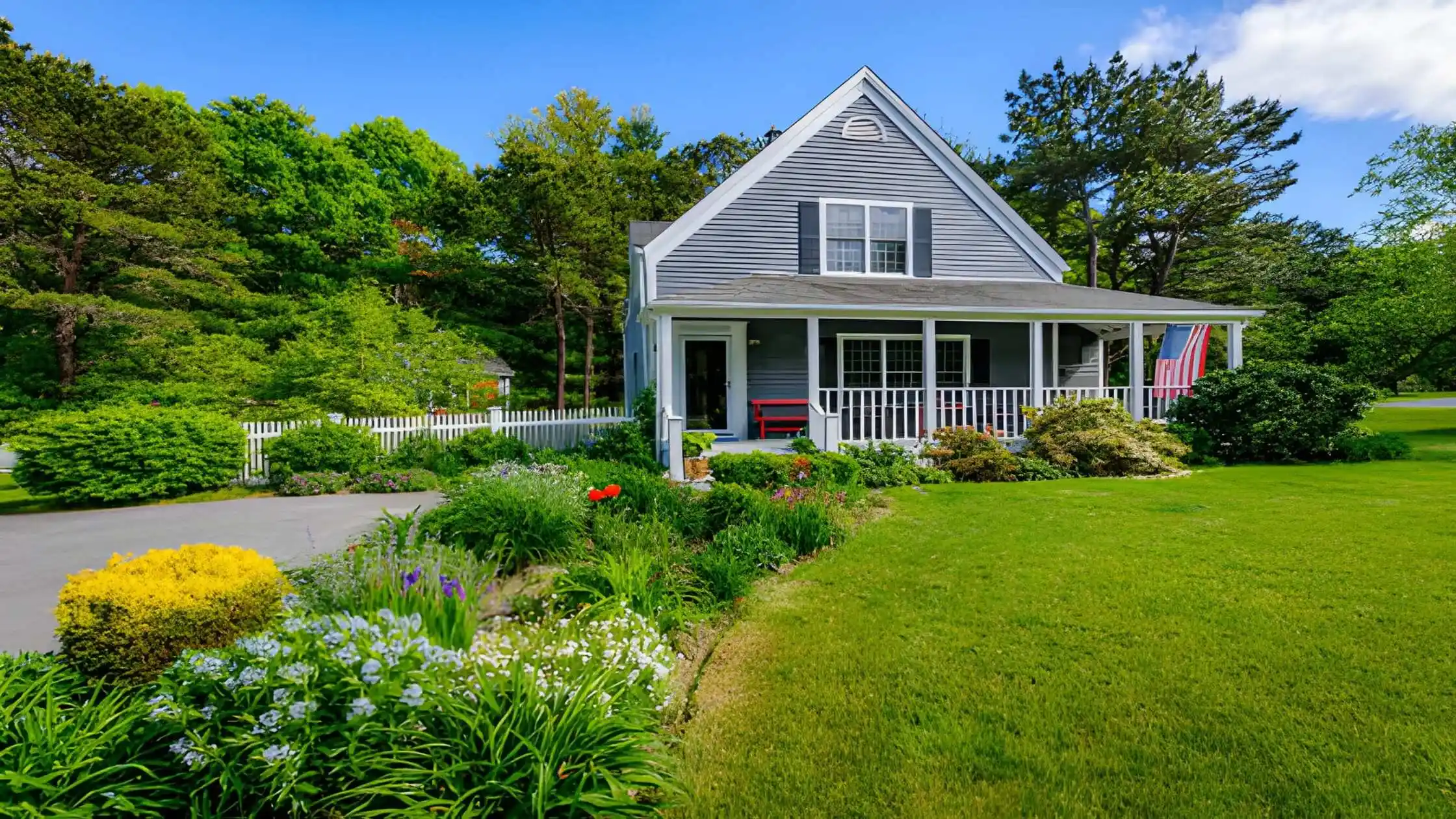Choosing between a single-family home and a multi-family home is the most important decision a landlord makes. Each property type strongly affects your overall rental strategy, changing your cash flow and risk balance. We will clearly define what a single-family home is versus what a multi-family home is. For example, owning a single-family residential home means you deal with only one tenant profile, making tenant stability high.
If you choose multiplex units, you face higher upfront costs but benefit from better profitability through multiple rents. This guide breaks down the core differences between single-family and multi-family home investments. We look closely at initial costs, typical lease duration, and the varied management styles required for success.
What Are Single-Family Rentals (SFRs)?

Single-family homes are stand-alone residential properties. They are designed for just one family or household. These structures usually come with their own private space. This includes a yard, a driveway, and separate utility setups for water, electricity, and gas.
Understanding what utilities are included in rent is a crucial detail to specify clearly in your lease agreement for a single-family home. By definition, a single-family residential home generally allows only one renter or family unit to live there. Common examples include traditional detached houses, many bungalows, and sometimes townhouses, depending on local laws.
For landlords, the main draw of single-family rentals is the strong demand. Renters often seek more privacy and room, especially families. It’s important to note that whether townhouses count as single-family or multi-family rental properties often depends on local zoning rules. However, many investors classify them as SFRs if they have separate entrances and individual utility meters.
Single-family rentals usually mean managing only one unit at a time. This makes property management simpler. This is true for maintenance and the process of tenant screening. Many landlords who invest in this type of real estate investing use platforms to automate tasks.
If you are renting out a house for the first time, the simpler management of an SFR can make the learning curve much easier. For example, a landlord might use LeaseRunner to run a background screening report on a potential renter. They can also set the optimal rent pricing based on the housing market. They can even draft the final lease agreement instantly.
Pros and Cons of Investing in Single-Family Rentals
Single-family homes offer clear benefits for many real estate investing owners:
- Tenant Stability: These rental properties naturally attract families looking for long-term housing. This significantly lowers unit turnover and marketing costs.
- Simpler Management: Dealing with one unit is much easier. You avoid handling multiple tenants and leases. A single-family home often requires less hands-on effort, which is appealing to what is a private landlord who manages properties part-time.
- Higher Rents in Some Markets: A private, detached house often commands a premium rental income. This is because of its high desirability.
- Easier to Finance and Resell: Banks and buyers generally prefer single-family homes. This makes loans easier to get. It also improves the property’s liquidity in the housing market.
However, SFRs also come with certain risks:
- Vacancy Risk: If the property is empty, your entire rental income stops. This hits your cash flow hard.
- Maintenance Costs: All repair and upkeep costs must be paid out of the single stream of rental income. There are no other units to help cover the expense.
- Tenant Challenges: Losing a great, long-term tenant can mean several months without income. You also pay for new marketing.
What Are Multi-Family Rentals?

Multi-family home rentals are different from single-family homes. They refer to buildings that contain multiple separate housing units. All these units are under one roof or in a connected structure. This can include small buildings like duplexes (two units), triplexes (three units), and fourplexes (four units).
It also includes larger apartment complexes. This category covers all multiplex units. In these units, several families rent separate spaces at the same time. Multi-family residential property investments appeal to owners because of the higher total cash flow. They also diversify your income streams. If one unit is empty, it doesn't usually mean you lose all your rental income. You still get money from the other units.
Pros and Cons of Multi-Family Rentals
Multi-family properties offer clear advantages for real estate investing owners:
- Diversified Income: Multiple rental units create a steady, predictable cash flow. You are not relying on just one renter.
- Economies of Scale: You save money because of shared costs. Shared walls, utilities, and common areas reduce the maintenance costs for each unit.
- Easier Tenant Placement: Smaller units often appeal to singles or couples. This broadens the demand for your units. For a multi-family property, you may also consider offering a what is a mid-term rental option to increase occupancy during periods of low demand for traditional long-term leases.
- Increased Appreciation Potential: Larger residential properties can sometimes increase in value faster. This depends a lot on the specific location and the housing market.
However, there are also downsides to consider for these rental properties:
- Higher Management Demands: More tenants mean more administrative work. There are also more potential conflicts between neighbours.
- Increased Vacancy Risks per Unit: Some units might be empty at times. This reduces your overall rental income even if you don't lose all of it.
- Zoning and Regulations: Multi-family properties often face stricter local laws and government inspections.
- Upfront Costs: The initial investment and mortgages tend to be much higher than for single-family homes.
Why Property Comparison Matters to Landlords?

Property comparison is crucial for landlords because the choice between single-family (SFR) and multi-family (MFR) units is vital for your entire investment strategy and risk profile. Here are the key "why" factors:.
- Market and Money: Consider where you are investing. A dense city often favours multi-family units. This is because they offer better cash flow. Suburbs often prefer single-family homes for higher rental income. It is essential to know if you are investing in one of the landlord-friendly states, as local laws can heavily impact the profitability of both property types.
For instance, check the average rent for a single-family home in the suburbs. Compare this to the combined rental income from four small multi-family apartments downtown. Choose the one that meets your financial goals.
- Management and Tenants: Think about how much work you want to do. Multi-family requires more time. You deal with diverse tenant demographics. It also needs more complex property maintenance. A single-family home is simpler to manage.
For example, if you live far away, choose the single-family home. It requires less daily, hands-on property maintenance. For real estate investing that is passive, low effort is key.
- Financing and Tools: Look at your borrowing power. Banks often require a larger down payment for multi-family properties. They see it as a commercial investment. Tools like LeaseRunner help landlords make decisions.
They analyse rent and provide clear lease templates. This makes tenancy simple, no matter the property type. You should always use an online rental application for pre-screening to streamline this process.
Cash Flow Showdown: Which Property Type Wins Monthly?

Deciding between a single-family home (SFR) and a multi-family property (MFR) is key. The choice affects your monthly cash flow and risk level. Landlords must compare how each property type handles income, vacancies, and costs. Here is a direct comparison of how they stack up financially.
Financial Comparison of Rental Properties Table
1. Typical Monthly Cash Flow
Multi-family properties usually bring in more money overall. This is because they have many different tenants paying rent. A single-family home often charges a higher rent for that one unit. However, the total money is often less than a multi-family property.
2. Vacancy Risk Impact
This is a major difference. If one tenant leaves a multi-family property, the landlord still gets rental income from the other units. This risk is "mitigated" (lessened). If a single-family home is empty, the landlord loses 100% of the cash flow. Landlords must learn how to determine vacancy rate accurately to forecast potential income loss in both property types.
3. Maintenance/Repair Costs
Multi-family owners benefit from "economies of scale." They can split the cost of things like roof repairs across multiple rental sources. This means the cost per unit is lower. For an SFR, the landlord pays the full cost of every repair. However, those repairs may happen less often.
4. Management Effort
Property management for a multi-family property takes much more time. You deal with more leases, more issues, and more tenant requests. Handling tenant parking rights, for instance, can become a much more frequent and complicated issue in a multi-unit setting. Single-family homes are easier to manage because there is only one tenant to handle.
5. Income Consistency
Multi-family properties offer steadier income consistency. Since not all units are empty at the same time, the money keeps coming in. Single-family home income is either 100% or 0%. This makes the cash flow less consistent month-to-month.
6. Tax Benefits & Depreciation
Multi-family properties are larger. Because of their size, they often qualify for greater depreciation deductions. This can lower the landlord's taxable rental income more than a smaller single-family home.
Ultimately, while a single-family home offers ease of management, multi-family properties generally provide superior cash flow stability and better protection against vacancy risk due to their diversified income streams.
Risk Factors Landlords Must Account For Single-Family and Multi-Family Rentals

Every type of real estate investing carries risk. Landlords must know these risks before they buy a rental property. Understanding these issues helps you plan your investment strategy. It helps you protect your cash flow, whether you own a single-family home (SFR) or a multi-family property (MFR).
General Risks for All Landlords
These risks apply no matter the property type. You will face them whether you manage one home or many housing units. You must prepare for them.
- Tenant defaults and late payments: Renters sometimes can't pay or just pay late. This affects your monthly cash flow. For instance, a tenant loses their job and pays rent 20 days late. You still must pay your mortgage on time. You need an emergency fund to cover this gap.
- Property damage or neglect: Tenants may not care for your home. They might cause damage beyond normal wear and tear. Imagine a renter leaves a bathtub overflowing, causing water damage to the ceiling below. You must pay for the repair. The cost may be higher than the security deposit.
- Market fluctuations: The housing market is always changing. This affects how much rent you charge and how many people want to rent from you. As an illustration, a new apartment complex opens down the street. It offers lower rent. This forces you to drop your own rent price to stay competitive. Your rental income goes down.
- Regulatory changes: Laws for landlords can change quickly. New laws might impact your costs or your rights. For example, a new city rule limits how much you can raise the rent each year. This restricts your ability to increase your cash flow over time.
Risk Factors Specific to Single-Family Rentals
These risks hit hard because you only have one source of rental income. Your financial stability depends entirely on that one renter.
- Entire income loss during vacancies: If the house is empty, your income is zero. You still pay the mortgage, taxes, and insurance. Specifically, if your tenant moves out on August 1st, and it takes you 45 days to find a new renter, you must pay all housing costs for that full month and a half. This makes your vacancy rate risk very high.
- Higher per-unit maintenance and repair costs: The landlord pays the full cost for every repair. You cannot split costs with other units. For example, if the furnace breaks and a new one costs $6,000, you cannot share this expense with other housing units. The whole cost comes out of your profit.
- Difficulty in tenant replacement: Finding a new tenant for a large family home can take longer. The pool of suitable applicants is smaller than for an apartment. In other words, you might wait two months to find a large family that needs a four-bedroom detached house in your specific school district. This keeps your vacancy rate high.
Risk Factors Specific to Multi-Family Rentals

These risks usually involve more complexity and higher upfront costs. They are related to managing multiple separate housing units.
- Increased tenant disputes and management complexity: More people living close together means a greater chance for conflicts. This takes up a lot of the landlord's time. Consider this: Tenants in unit A complain that unit B is too noisy late at night. You must spend time handling the dispute. This adds to your property management workload.
This complexity is also why landlords often need to establish rules on how to split rent for shared common spaces in duplexes or triplexes.
- Legal compliance can be costly: Larger residential properties often face stricter building codes, fire safety rules, and local inspections. For instance, the city requires you to install a new fire alarm system in a fourplex. The cost is high, but the law requires it. Your operating expenses increase.
- Potential overreliance on market demand for smaller units: Many MFRs are small apartments. If the housing market shifts and everyone wants houses, your smaller units may sit empty. If a large company moves out of the city, demand for the one-bedroom apartments in your building drops.
You might have several housing units vacant at the same time. This affects your expected cash flow. Landlords must also be clear on the length of the agreement, including what lease length is, as this impacts income stability.
Conclusion
Choosing between a single-family home and a multi-family home depends on investment goals, risk tolerance, and resource availability. Multi-family properties often deliver stronger cash flow and income stability, ideal for landlords ready to manage larger complexes and multiple tenants.
Single-family homes suit those seeking easier management and less complexity. LeaseRunner offers tools to help landlords price rent, screen tenants, and handle leasing seamlessly for both property types. You must also understand what the reletting fee is if your tenant breaks the lease early, as this impacts both the landlord's and tenant's financial risk. Make sure to evaluate your local market carefully to maximise your rental profits and reduce risks effectively.
FAQs
Is a duplex considered a single-family home?
No. A duplex is a multi-family property. It has two separate living units under one roof. Landlords benefit from multiple rent sources here.
How to find multifamily properties?
Use real estate investing platforms. Look for listings that specialise in multi-family units, like duplexes or triplexes. You can also talk to local property managers.
Are townhouses considered single-family or multifamily?
They are usually counted as single-family homes. They typically own the land under them. They also have their own separate entrances. The rules can change based on the community design and local zoning and regulations.







